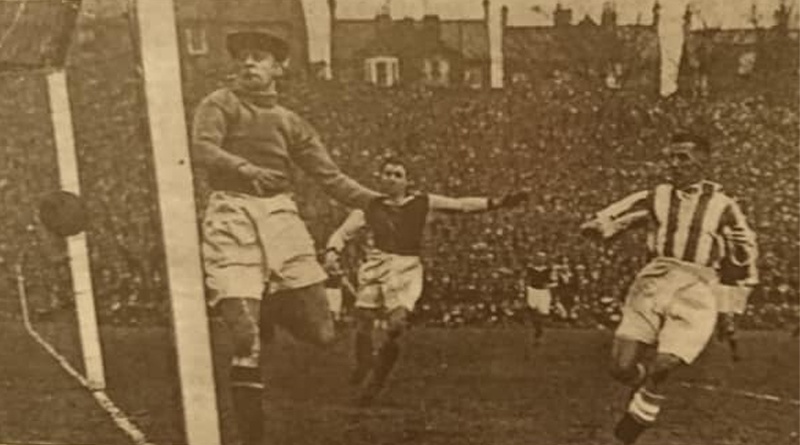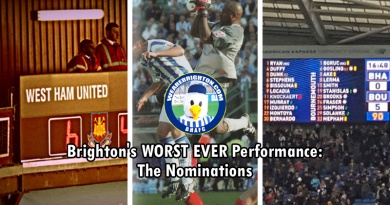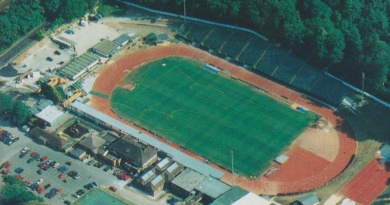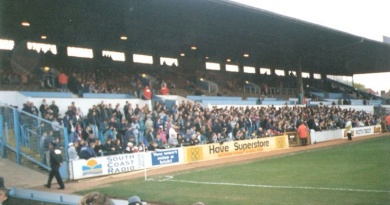When Brighton & Hove Albion forgot to enter the FA Cup
You aren’t human if you don’t forget something every now and again. Your anniversary. Your mother’s birthday. Locking the front door of the house.
But what happens when a football club forgets to enter the FA Cup? Impossible you might think. But not if you are Brighton & Hove Albion, who almost missed out on playing in the world’s greatest cup competition in the 1932-33 season.
Seagulls secretary Albert Underwood was the man responsible for this spectacular cock up. To enter the 1932-33 FA Cup, a club’s application had to be with the Football Association by March 20th 1932.
The Albion’s never arrived. As a result, Brighton would have to go through four FA Cup qualifying rounds with all of England’s amateur outfits if they wanted to take their place in the first round proper alongside the Football League’s other 91 clubs.
There was much debate about whether it was worth the bother. Might it not be easier to withdraw from the FA Cup, rather than have to face four opponents made up of Postman Pats and Fireman Sams, just to get to the first stage of the competition?
Those thoughts were quickly shelved though when the Sussex footballing public got wind of the Albion’s oversight. The qualifying rounds of the FA Cup were regionalised, which meant that at least one of the county’s non league clubs would be getting the chance to take on Charlie Webb’s professionals – if Brighton took part.
Suddenly, there was a surge in interest in the competition in the area. The thought of a County League outfit walking out at the Goldstone in a competitive game had Sussex talking and the powers that be at the Albion decided to give the people what they wanted by entering the FA Cup at the first qualifying round stage.
The big question now was who would be the lucky County League club paired with Brighton in this most unusual situation? And could they pull off the sort of FA Cup upset that the Albion have often become victims of in the past 30 years, but was actually incredibly rare back in the club’s first 50 years?
Fate of course decreed that it was one of the lowest ranked sides who got the gig – Shoreham. The 1932-33 campaign was the Musselmen’s first back in the County League following a seven year absence in which they had been playing in the Brighton League. Just six months after they were playing park football, Shoreham were now walking out at the Goldstone.
The game took place on Saturday 1st October 1932. 5,500 inquisitive fans rocked up to Hove, a bigger attendance than Brighton managed to attract for nine of their 21 Division Three South fixtures that season.
They were treated to a hammering. Brighton were 5-0 up at half time on their way to a 12-0 success. Arthur Attwood helped himself to a double hat-trick, Potter Smith grabbed three, Dan Kirkwood two and Bobby Farrell one.
Next up in the second qualifying round were Worthing, one of the better sides in the County League. The draw had sent the Albion to Woodside Road, but in order to give the Rebels a bigger slice of a gate receipts pie, it was switched to the Goldstone and played two weeks after the massacre of the Musselmen.
Worthing fared slightly better than Shoreham, only losing 7-1. Attwood and Smith nabbed two apiece, Farrell one with Tug Wilson and George Ansell also on target.
The third qualifying round presented what should have been a more challenging tie against Southern Amateur League side Hastings & St Leonards.
Again, Brighton offered to host the tie but Hastings were determined to put it on themselves. They were rewarded for that with a record crowd at the Pilot Field of 7,723, but it was far less successful on the pitch as the Albion walloped their amateur opponents 9-0.
Farrell was the hat-trick scorer this time with Attwood and Smith having to settle for a brace each. Stan Thompson completed the goals with a double of his own.
Brighton faced their first non-Sussex opponents in the fourth qualifying round with a trip to Barnet. The Bees had been crowned Athenian League champions two seasons earlier and were one of the finest non league sides of the era, but even they proved no match for the Albion who swatted them aside 4-0 at Underhill.
Thompson notched two in north London with Smith and Attwood adding to their cup hauls. And so after four games and having plundered 33 goals, Brighton were in the first round proper of the FA Cup. Which is where the fun really began.
Crystal Palace at Selhurst Park were up next. It would be at another 40 years before the Brighton-Palace rivalry that we know today kicked into life and so there were no bragging rights at stake, just a place in round two of the competition.
Brighton duly claimed it as theirs thanks to an impressive 2-1 win against a side who would finish the season seven places above them in Division Three South. Thompson and Attwood were the second half scorers for the Seagulls.
Round two brought Division Three North side Wrexham to the Goldstone. 10,352 turned out for a fairly uninspiring 0-0 draw. By the time the replay was held at the Racecourse Ground, both sides had a pretty bloody big carrot dangling in front of them – the winners would host Division One Chelsea in the third round.
What followed was a classic cup tie. Wrexham were 2-0 ahead going into half time but some managerial magic from Webb saw him rejig his lineup and that led to a much improved Albion performance.
Smith pulled one back within 10 minutes of the restart but even though Brighton laid siege to the Wrexham goal, it looked like Chelsea would be heading to north Wales right up until the final five minutes when Dave Smith struck an equaliser.
That sent the tie into extra time. This may have been the Albion’s seventh game in the competition, but they looked fitter and sharper than their opponents. Farrell popped up with the winner in the 108th minute and Chelsea were coming to Brighton in the third round of the FA Cup.
The Blues had reached the semi finals the previous season and arrived in Hove with three England internationals and one Scotland international in their line up.
Despite that array of talent, it took Attwood less than 30 seconds to put the Albion 1-0 ahead. A feisty game followed with Wilson adding a second just past the hour mark.
Chelsea pulled one back late on through George Barber but they couldn’t force an equaliser. It was a stunning result for the Albion, although it didn’t garner the national attention it deserved as on the same day, struggling Division Three North side Walsall eliminated an Arsenal side who were so good that they were crowned English champions three seasons running.
Round four of the FA Cup paired Brighton with Bradford (Park Avenue) of Division Two. Webb’s men pulled off another shock, easily winning 2-1 thanks to first half goals from Attwood and Smith to set up a fifth round meeting with West Ham United.
The Hammers had been relegated from Division One at the end of the 1931-32 season, but even so it was a tie that drew a huge amount of interest.
32,310 turned up to the Goldstone, becoming the ground’s first crowd of over 30,000 and breaking the previous attendance record by over 5,000. The new high mark would stand for 25 years.
Whether the Goldstone could accommodate that many people is a matter for debate. Many supporters are reported to have been so squashed in that they could barely see the action, although they certainly knew when Reg Wilkinson put Brighton 1-0 ahead with 10 minutes played given the roar that greeted the goal.
Things got even better 20 minutes later when Attwood doubled the lead. At that point, Brighton’s remarkable FA Cup run look destined to stretch into the quarter finals.
Vic Watson pulled one back for West Ham just before half time. The Albion did their best to hold on and they nearly did, the Hammers only finding an equaliser in the 80th minute through an excellent direct free kick from Joe Musgrave.
That meant a replay at the Boleyn Ground four days later. It was here that Brighton’s epic FA Cup run came to an end although it was not without a fight as extra time was needed for West Ham to win 1-0, Jackie Morton scoring the winner.
The Hammers went onto make it to the semi finals, where they lost 2-1 to eventual winners Everton. Brighton meanwhile were left to look back on an unparalleled FA Cup adventure which had spanned five months, nine opponents from seven different leagues, 11 games, 1050 minutes of football and 44 goals.
When Albert Underwood forgot to enter Brighton in the FA Cup in March 1932, it looked like an almighty cock up. As the Albion finally exited the 1932-33 competition on February 22nd 1933, nearly one year on from Underwood’s mistake, nobody was complaining after an extraordinary adventure.




